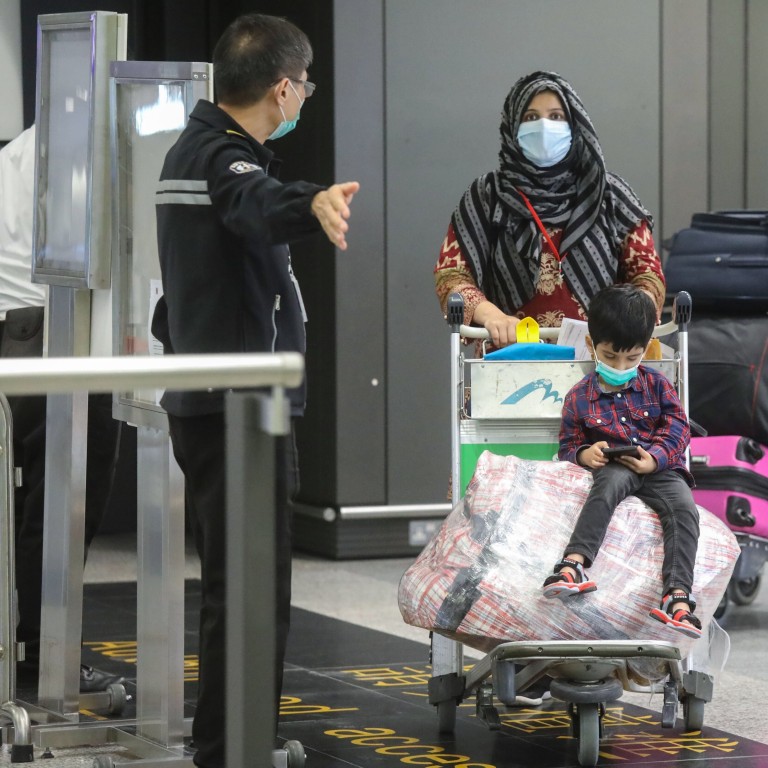
Coronavirus: Hong Kong records fifth day in row of no new infections, but experts say imported cases likely in coming days as stranded residents return from Pakistan
- Chartered flight with 319 residents landed in evening and returnees will be tested for Covid-19 before being quarantined
- There have been no local coronavirus cases recorded in 11 days
There have been no local Covid-19 cases recorded in 11 days, and it was the seventh time in the same period that the city overall had no new infections, with the total remaining at 1,037. Sixteen more patients, meanwhile, were discharged from hospital.
The chartered flight with 319 residents landed in the evening and the returnees were due to have their saliva tested for Covid-19 at AsiaWorld-Expo, near the airport, before they were transferred to Chun Yeung Estate, a government quarantine camp in Fo Tan where they will spend 14 days in isolation. The flight costs about HK$6,000 (US$769) per person, paid for by the passengers.
The Immigration Department earlier revealed that it had been contacted by 3,200 residents stranded in India, while another 2,000 people were stuck in Pakistan. The government was planning to fly them back to the city in phases by chartered flights.
Coronavirus latest: New York’s death toll tops 18,000; 528 new cases in Singapore
“We are expecting that some of these residents will test positive for the coronavirus after arrival or during quarantine, as the epidemic control measures in India and Pakistan are much less restrictive compared with Hong Kong, and no-symptom cases might return,” said Dr Leung Chi-chiu, chairman of the Medical Association’s advisory committee on communicable diseases.
“As long as the government does its best to isolate these arrivals, the public does not have to be too worried, as the virus will not get into the community.”
Dr David Hui Shu-cheong, an infectious disease adviser to the government, agreed that border controls would be important in the next few months, as the city had transmission of the disease in check, so most of the new cases would be imported.
“As long as we maintain our hygiene, we can see some social-distancing measures relaxed soon,” he said.
Top microbiologist Dr Ho Pak-leung believed the government could consider relaxing social-distancing restrictions for restaurants and beauty parlours if there were no new local infection cases by Mother’s Day on May 10.
Coronavirus ‘may lurk deep in lungs after patients recover’
“Restaurants should set up appropriate partitions, and still distance tables from each other,” Ho told a radio programme on Thursday morning.
He said allowing eight people to sit at one table could be considered rather than the current four, while Hui earlier suggested easing the restriction to six people.
Ho also reminded members of the public not to get caught off guard over the long weekend and to keep wearing masks, especially when using public transport.
Meanwhile, researchers at the London School of Hygiene and Tropical Medicine are working on a platform that brings together information on the hundreds of different interventions that have been introduced among countries to understand the effect of control measures, according to an article in the British scientific journal Nature.
Those studying Hong Kong’s approach found that swift surveillance, quarantine and social-distancing measures, such as the use of masks and school closures, helped to cut the coronavirus transmission rate – measured by the average number of people each infected person passed the virus to – to close to the critical level of one by early February.
The city’s rate has remained lower than 0.8 since early April, according to the University of Hong Kong.
Help us understand what you are interested in so that we can improve SCMP and provide a better experience for you. We would like to invite you to take this five-minute survey on how you engage with SCMP and the news.

